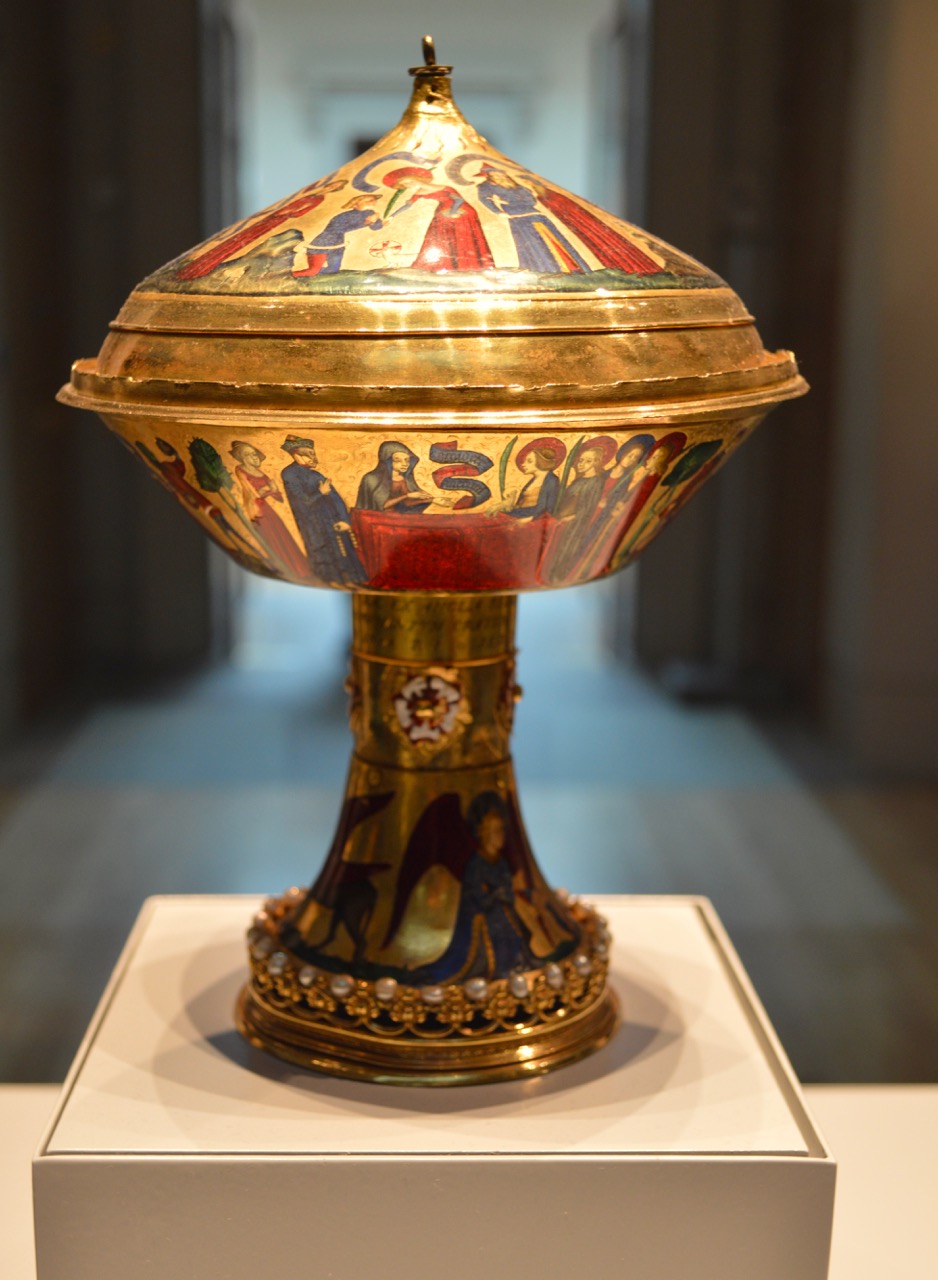
Walk into Room 40 in the British Museum via the staircase in the entrance lobby and the first thing that hits you is this wonderful piece of medieval metalwork – The Royal Gold Cup, created around 1380 in France by John, Duc de Berry for his brother Charles V (or, some sources say, for his nephew Charles VI).
It’s a lidded cup that weighs just under 2kg (so just over 4lb) is around 23cm (9 inches) tall and is made from gold with ‘basse-taille’ (low relief) enamelling that tells the story of the martyrdom of St Agnes (Charles V birthday was St Agnes’ Day – 21 January).
[Here’s me doing an online talk about the Cup and explaining more about the story of St Agnes]
The cup came into English hands (the Duke of Bedford, regent for the boy king Henry VI) sometime around 1420 and from there entered the royal treasury of the kings of England. It was in the inventory of treasures of Henry VIII (who had the ring of Tudor roses inserted into the stem) and of Elizabeth I, and then passed to here successor, James I of England, VI of Scotland.
James presented it to the Spanish ambassador on the conclusion of a peace treaty in 1610, and it was then given to a convent near Burgos in Castile and Leon. In the late 1800s the nuns were short of money and the cup was sold to a dealer in Paris, then bought by a Bond Street antiques gallery, who sold it to the British Museum.
In its time, it would not have been regarded as particularly exceptional (Charles V is known to have had 25 such cups of varying sizes), but its survival makes it unique. It is a gorgeous piece – go and see it and be prepared to be captivated by its beauty and craftsmanship.

